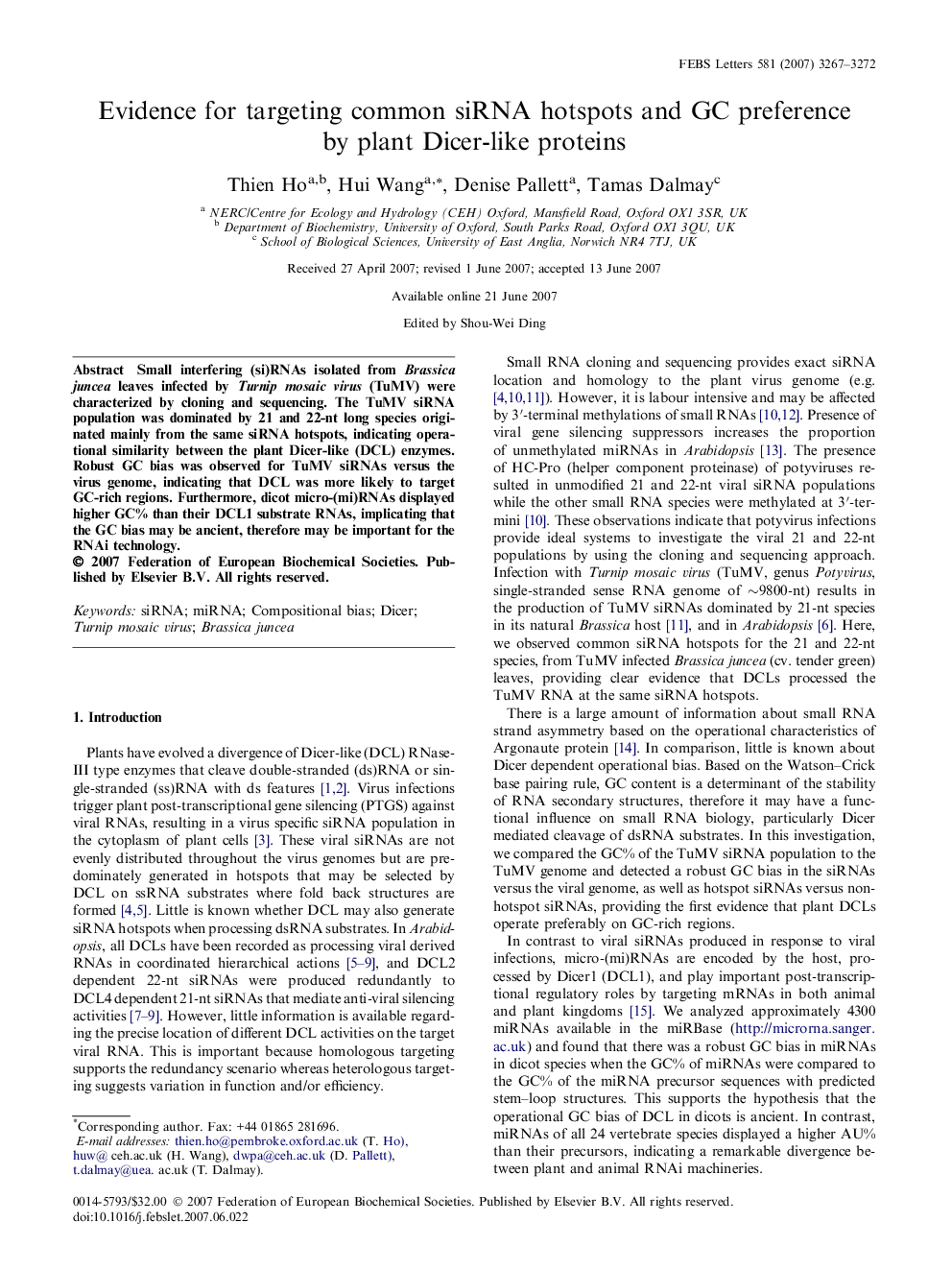| Article ID | Journal | Published Year | Pages | File Type |
|---|---|---|---|---|
| 2050749 | FEBS Letters | 2007 | 6 Pages |
Abstract
Small interfering (si)RNAs isolated from Brassica juncea leaves infected by Turnip mosaic virus (TuMV) were characterized by cloning and sequencing. The TuMV siRNA population was dominated by 21 and 22-nt long species originated mainly from the same siRNA hotspots, indicating operational similarity between the plant Dicer-like (DCL) enzymes. Robust GC bias was observed for TuMV siRNAs versus the virus genome, indicating that DCL was more likely to target GC-rich regions. Furthermore, dicot micro-(mi)RNAs displayed higher GC% than their DCL1 substrate RNAs, implicating that the GC bias may be ancient, therefore may be important for the RNAi technology.
Related Topics
Life Sciences
Agricultural and Biological Sciences
Plant Science
Authors
Thien Ho, Hui Wang, Denise Pallett, Tamas Dalmay,
